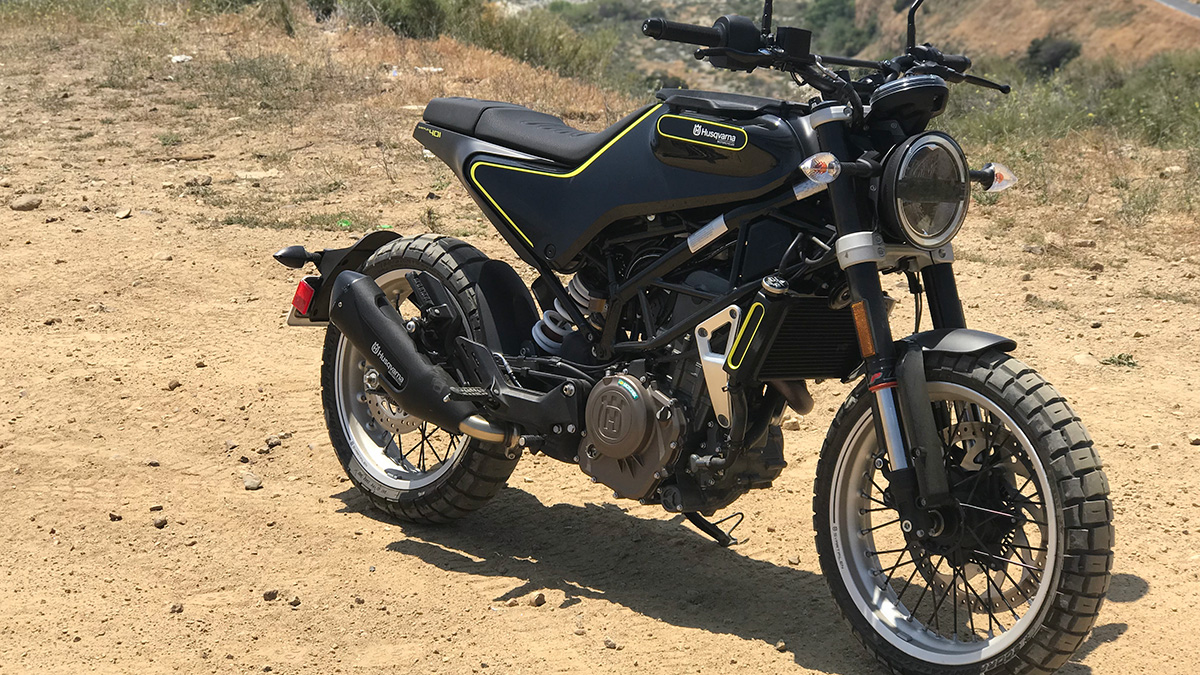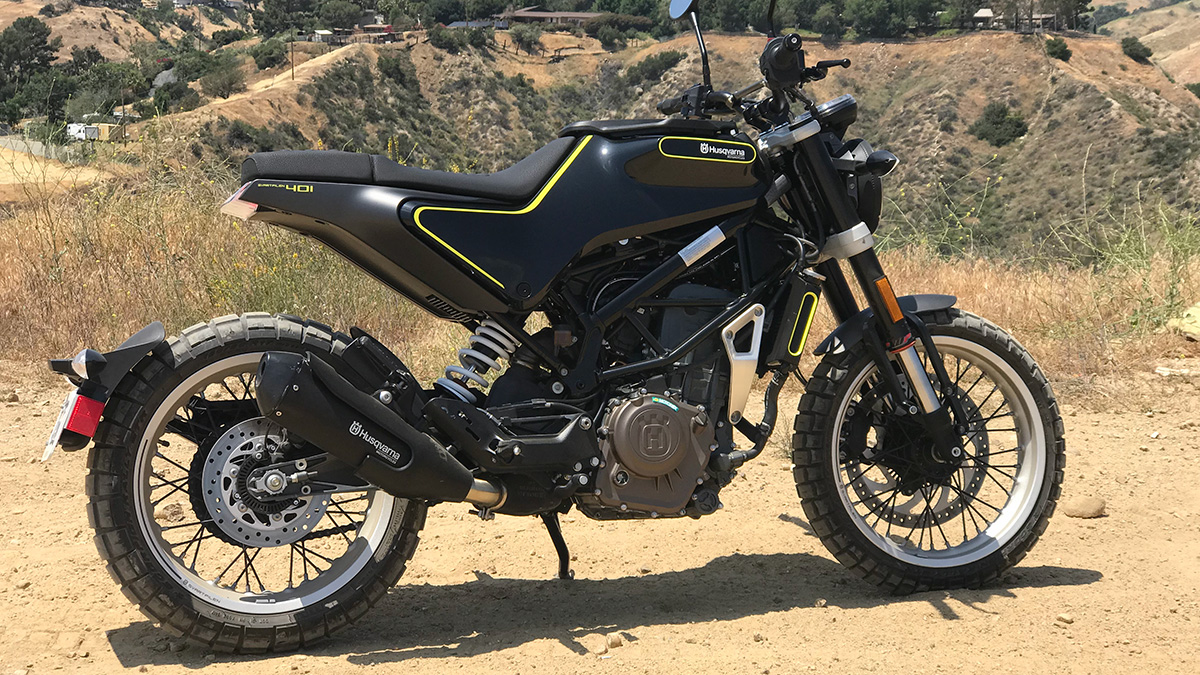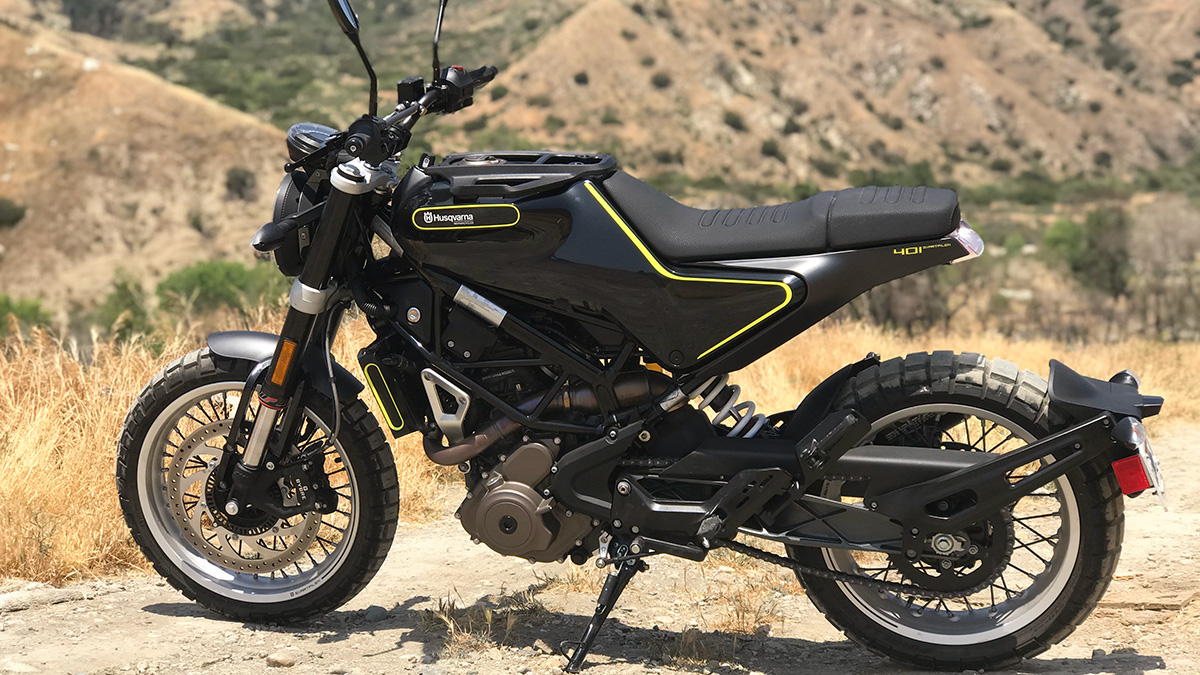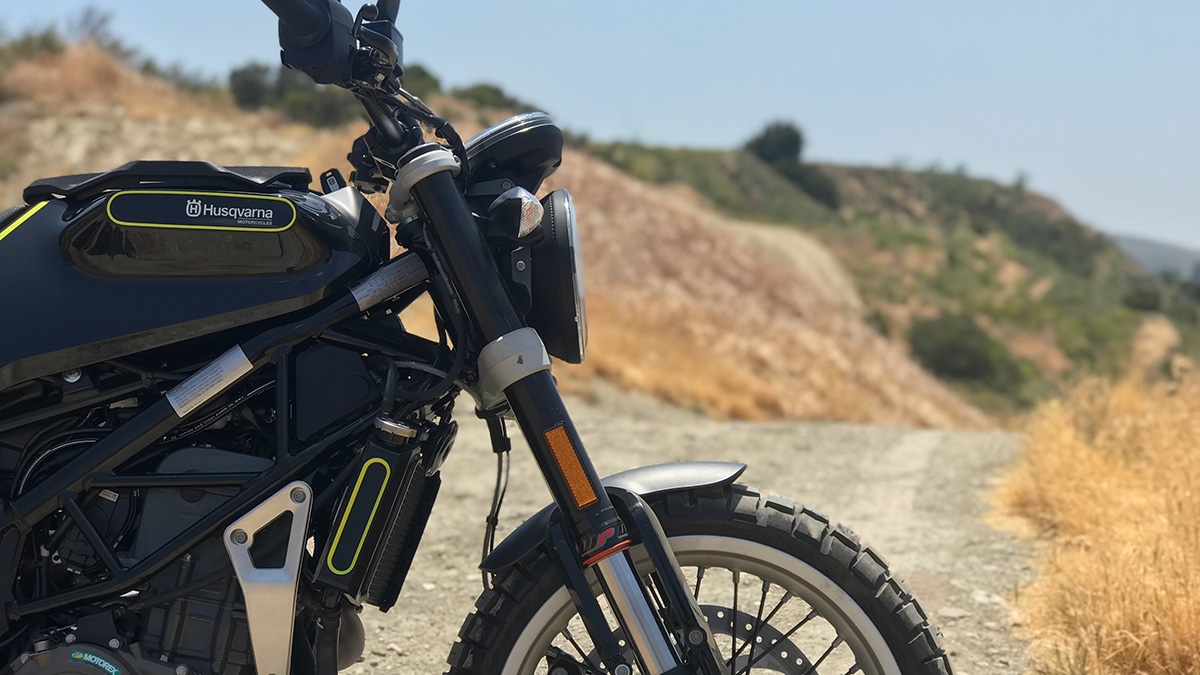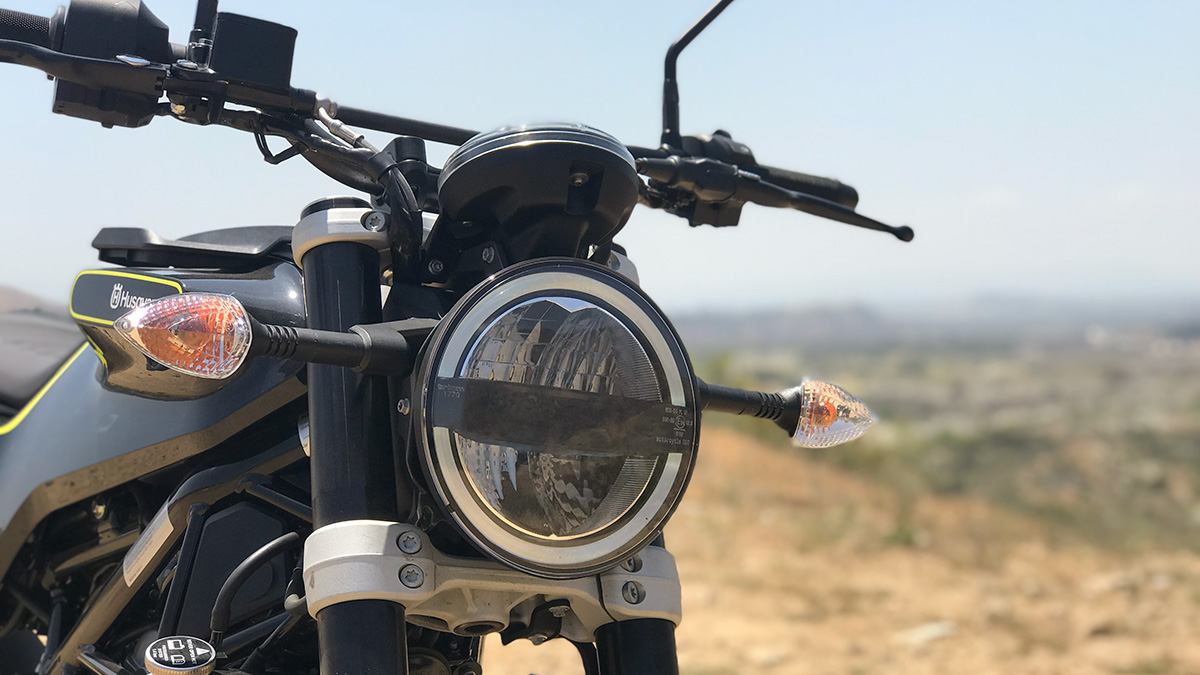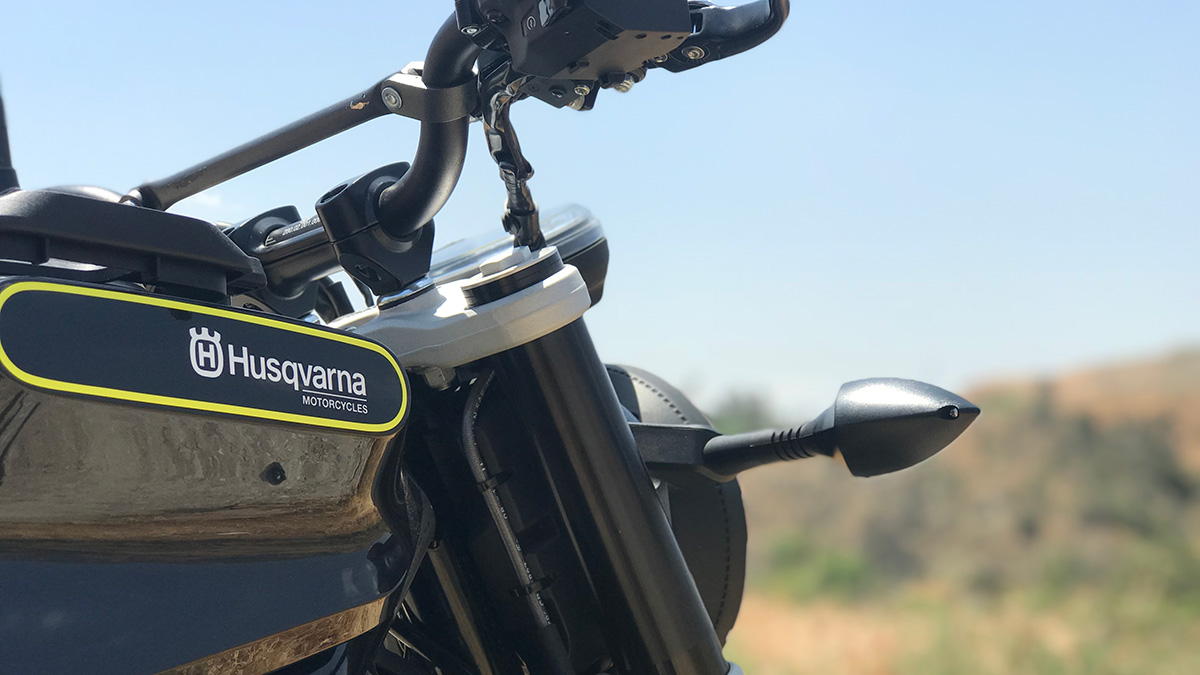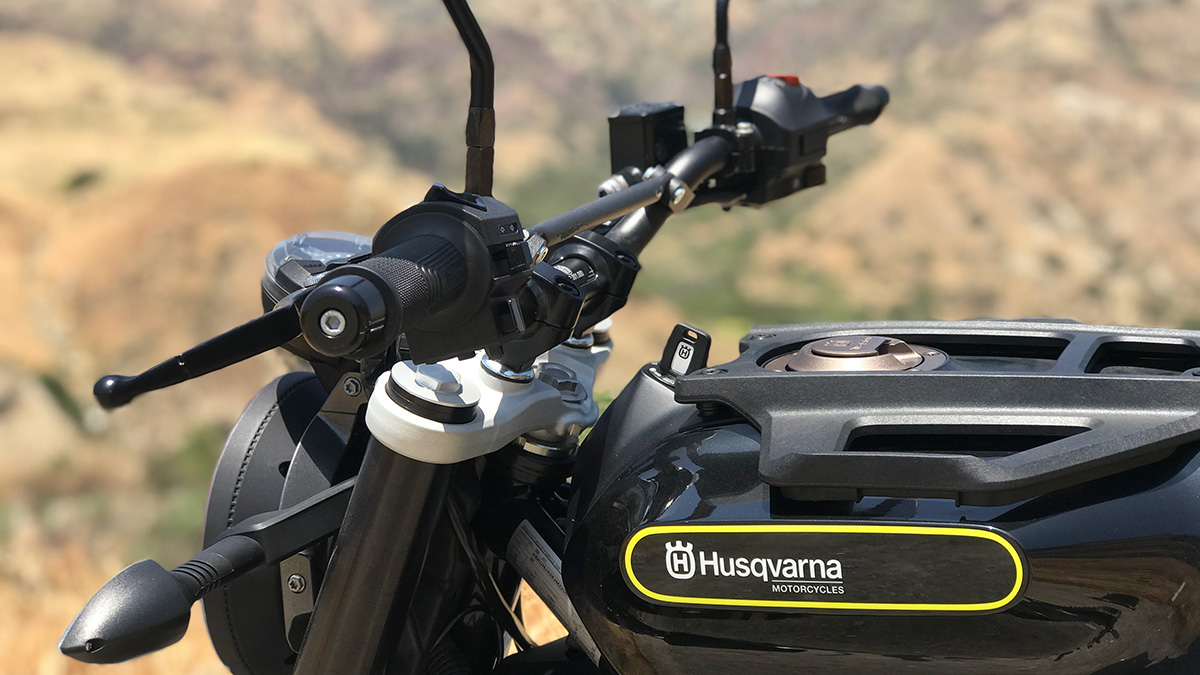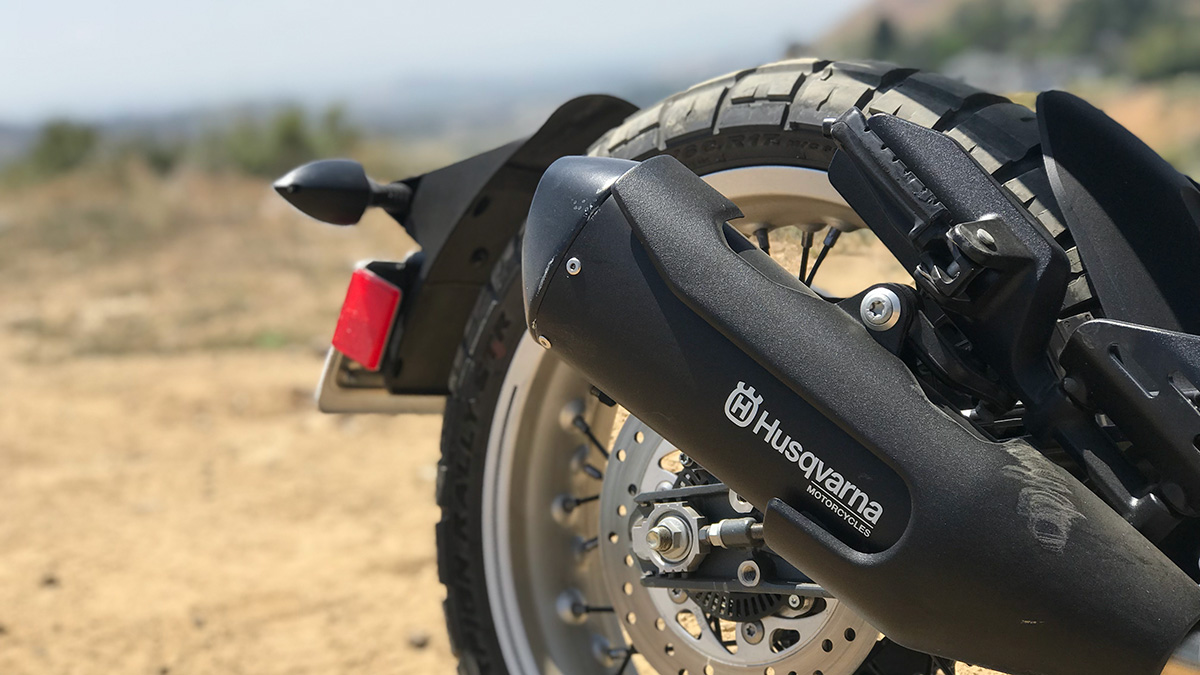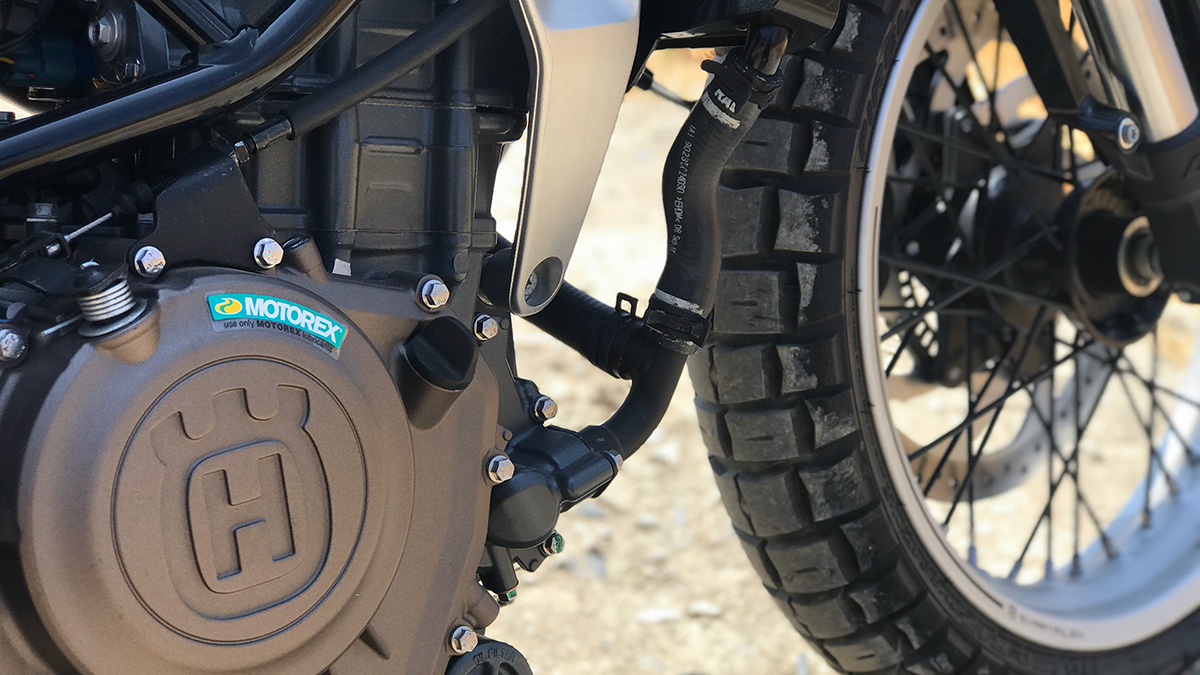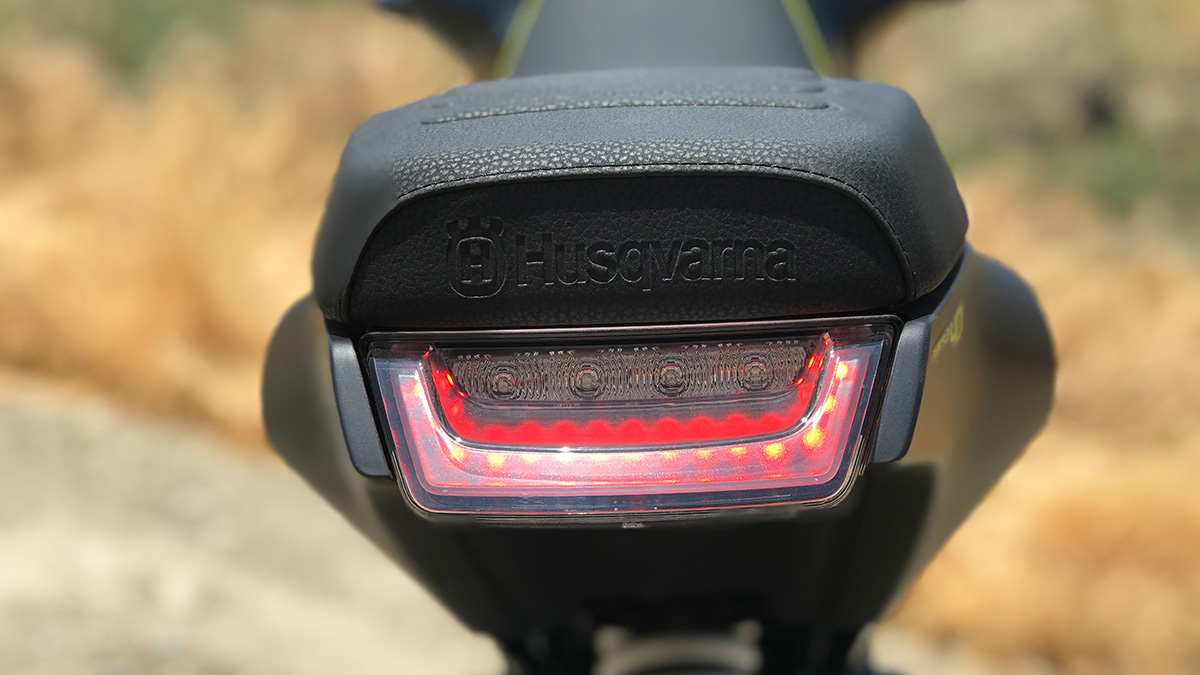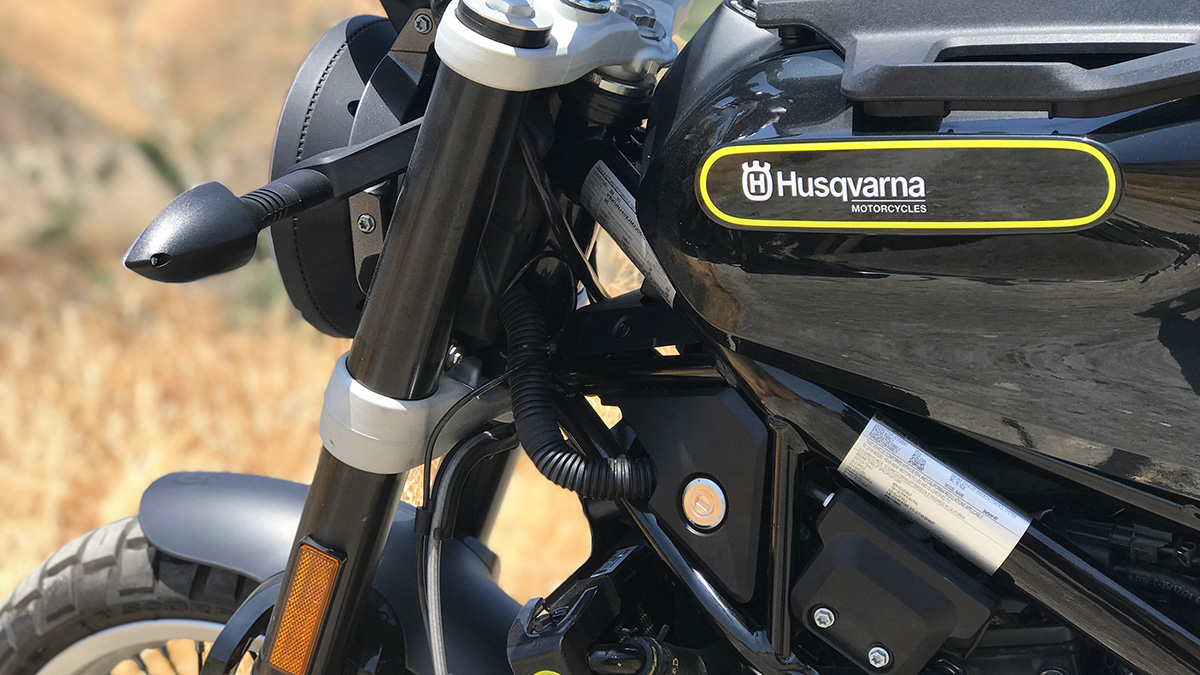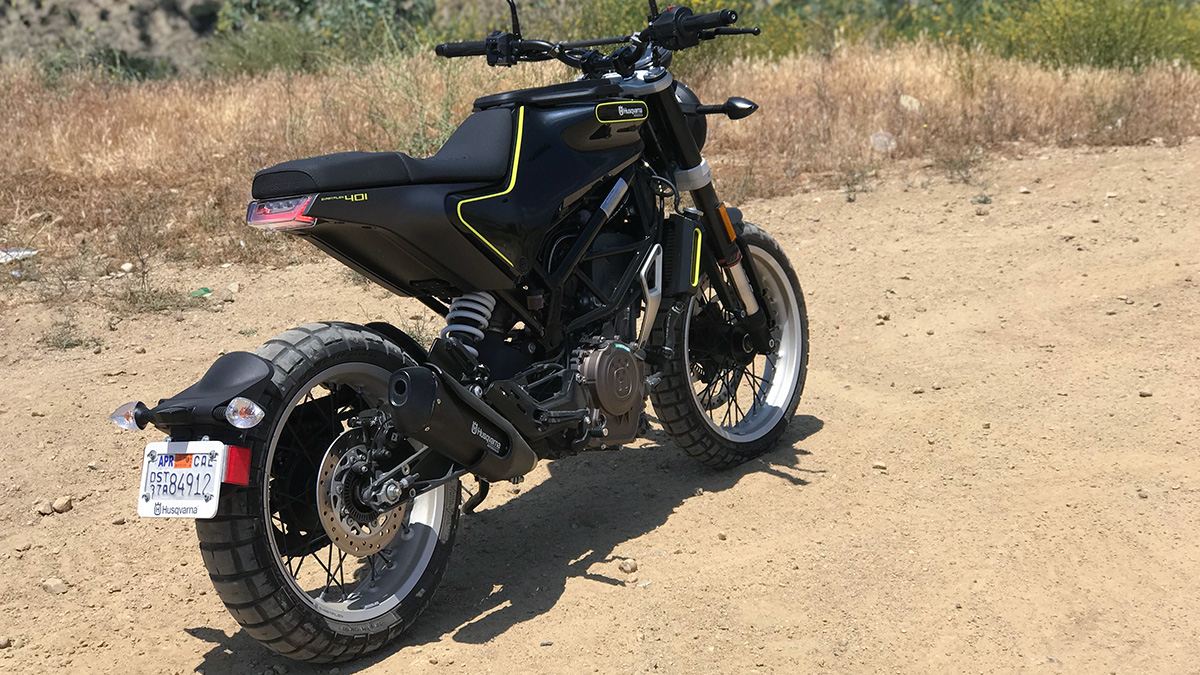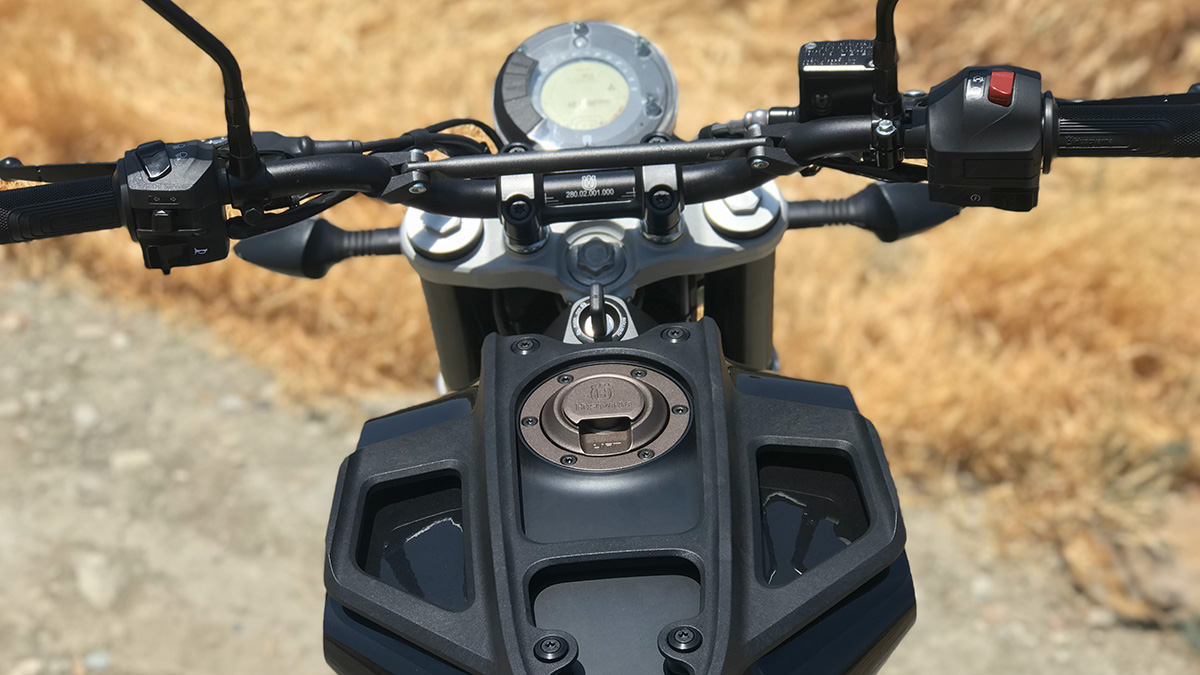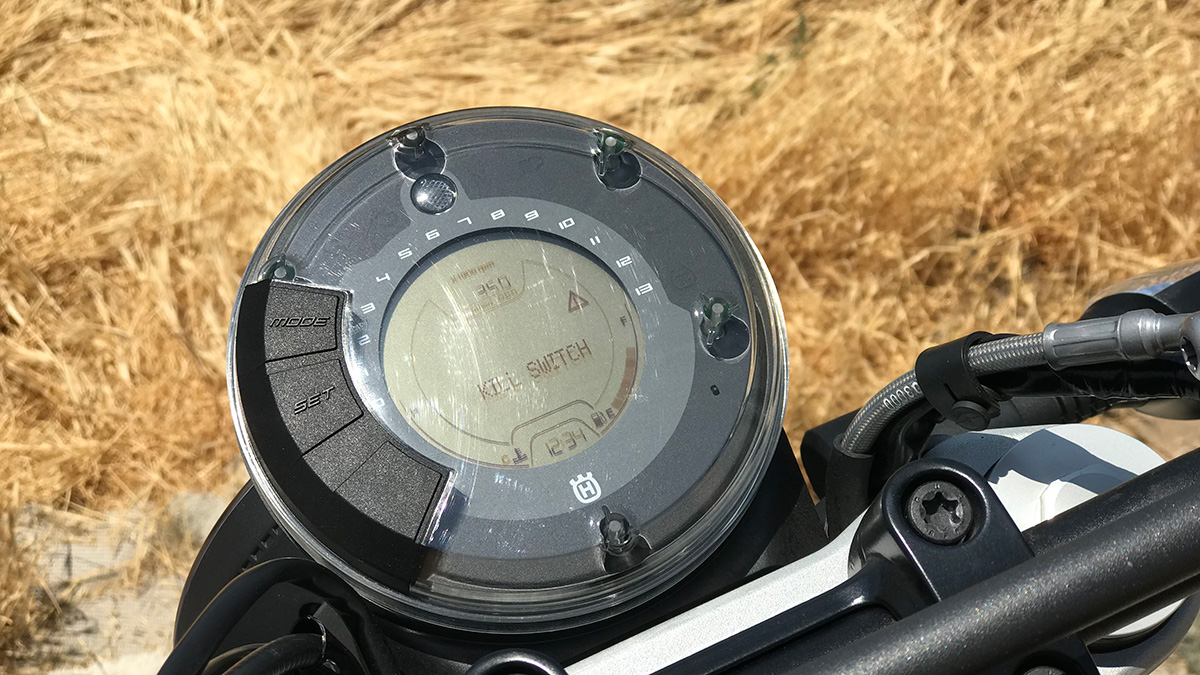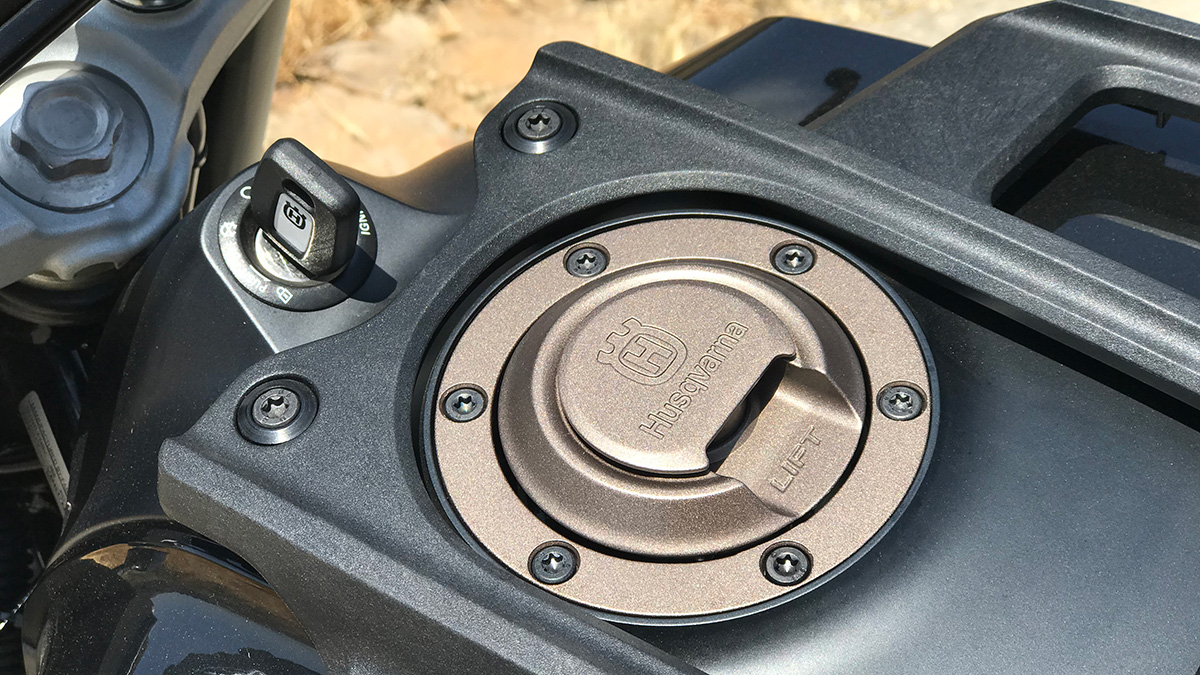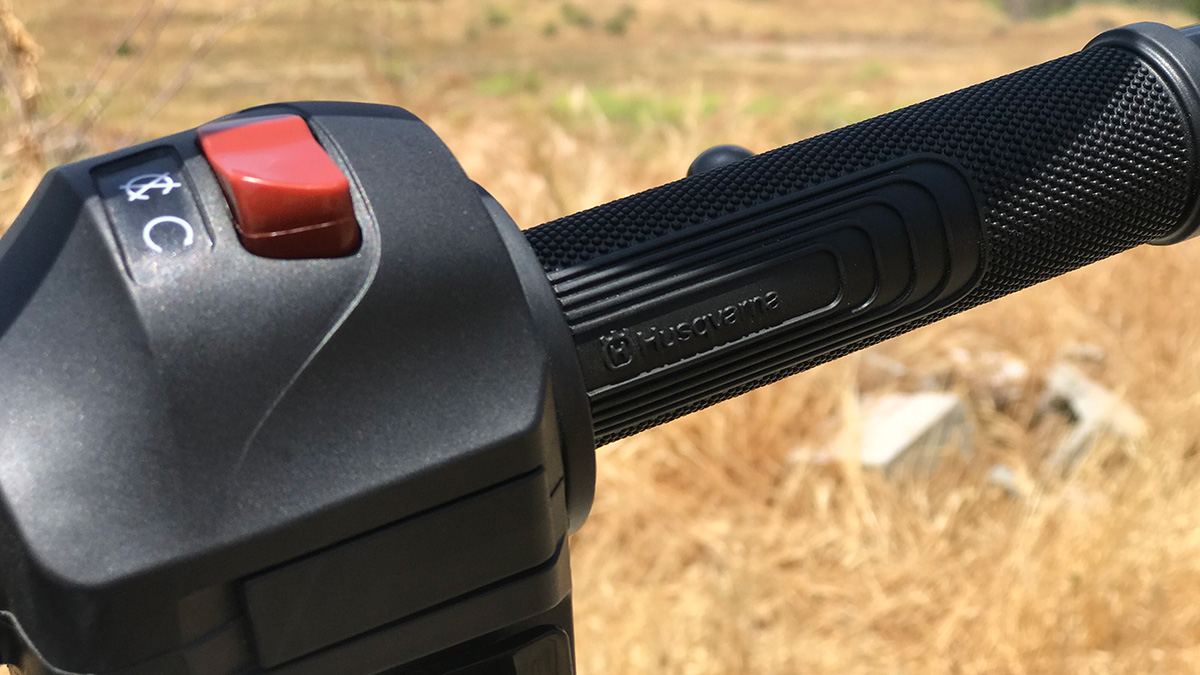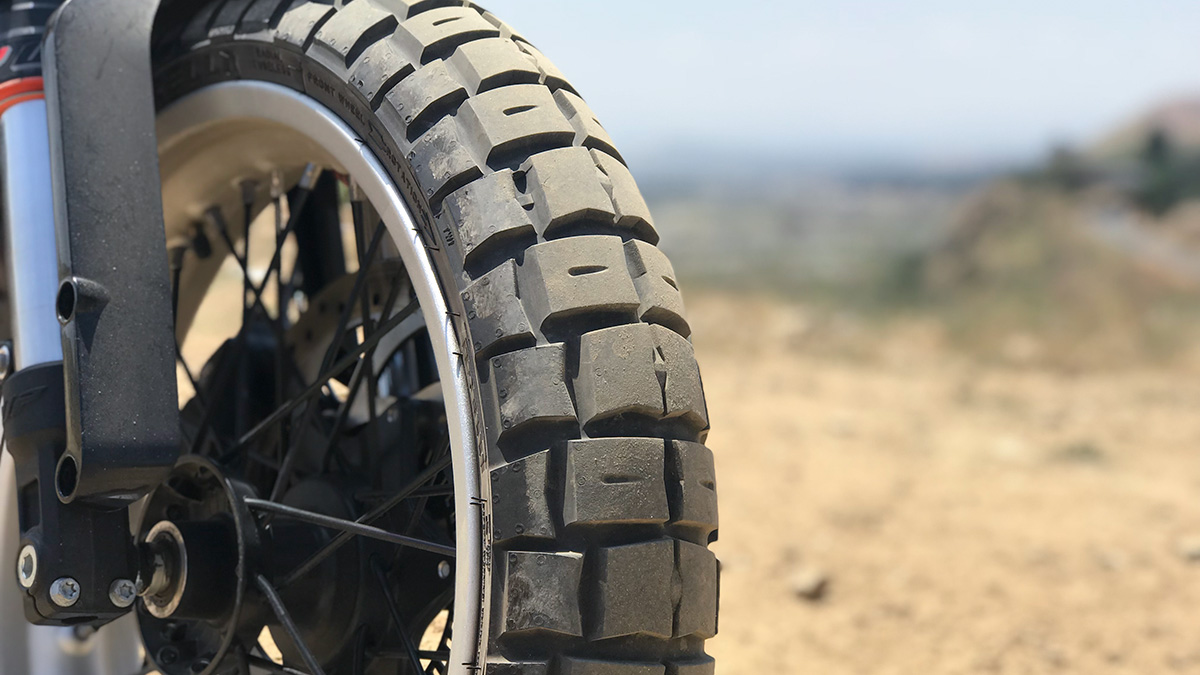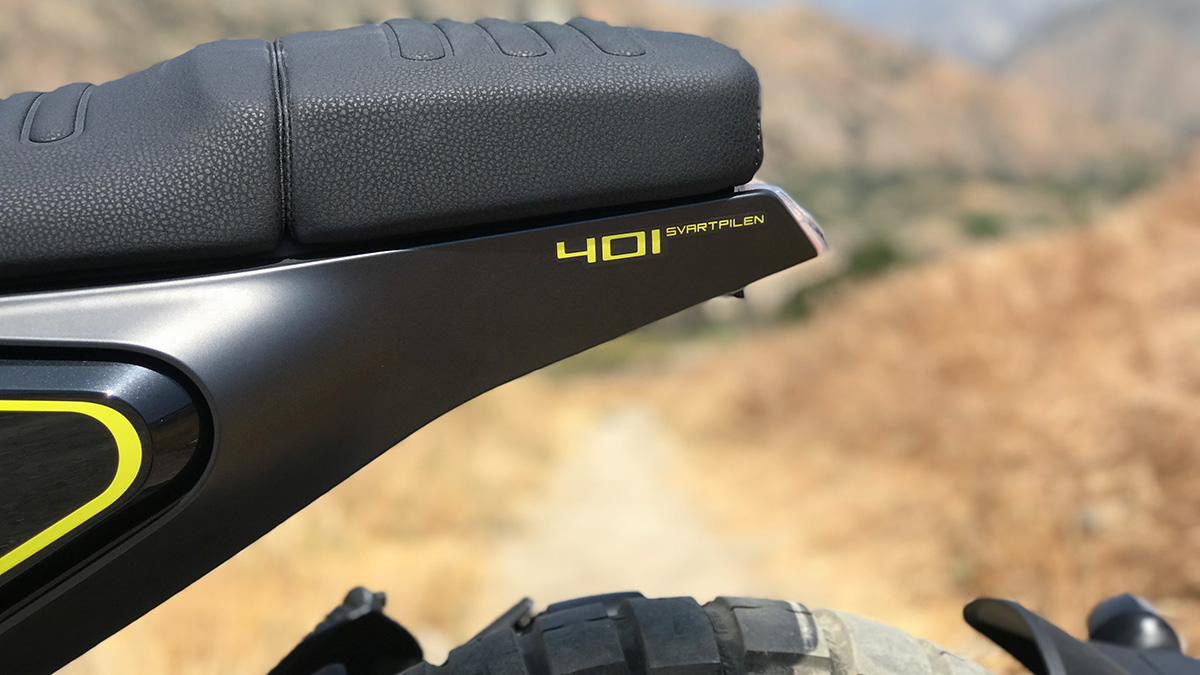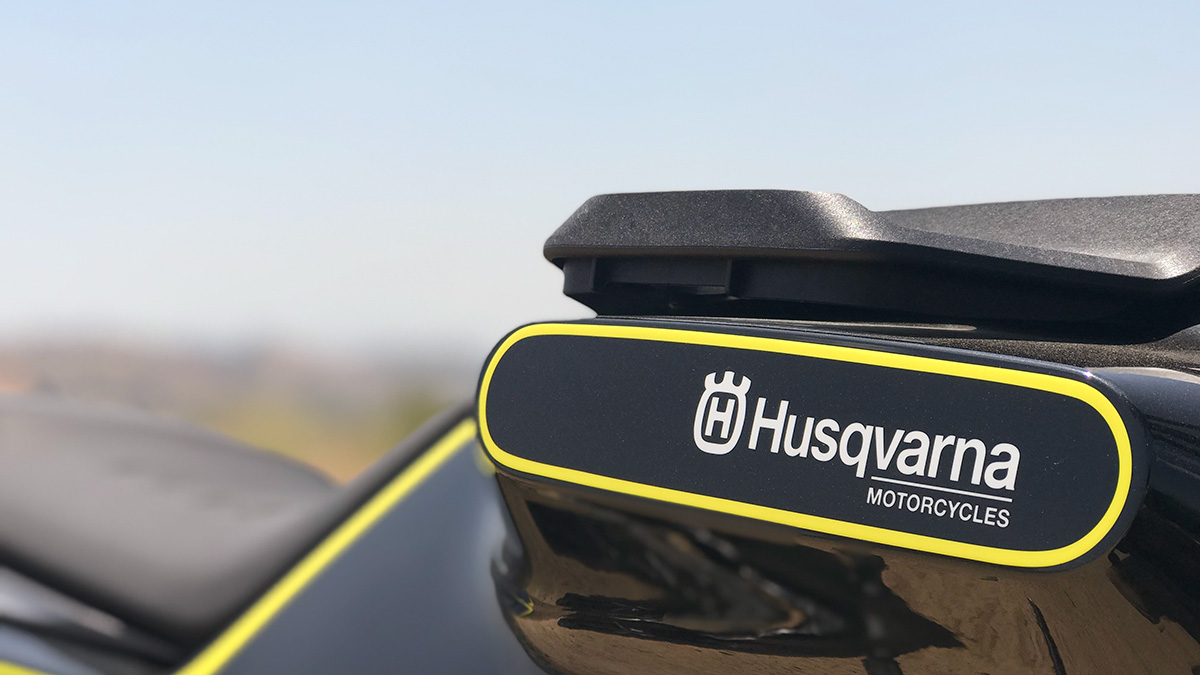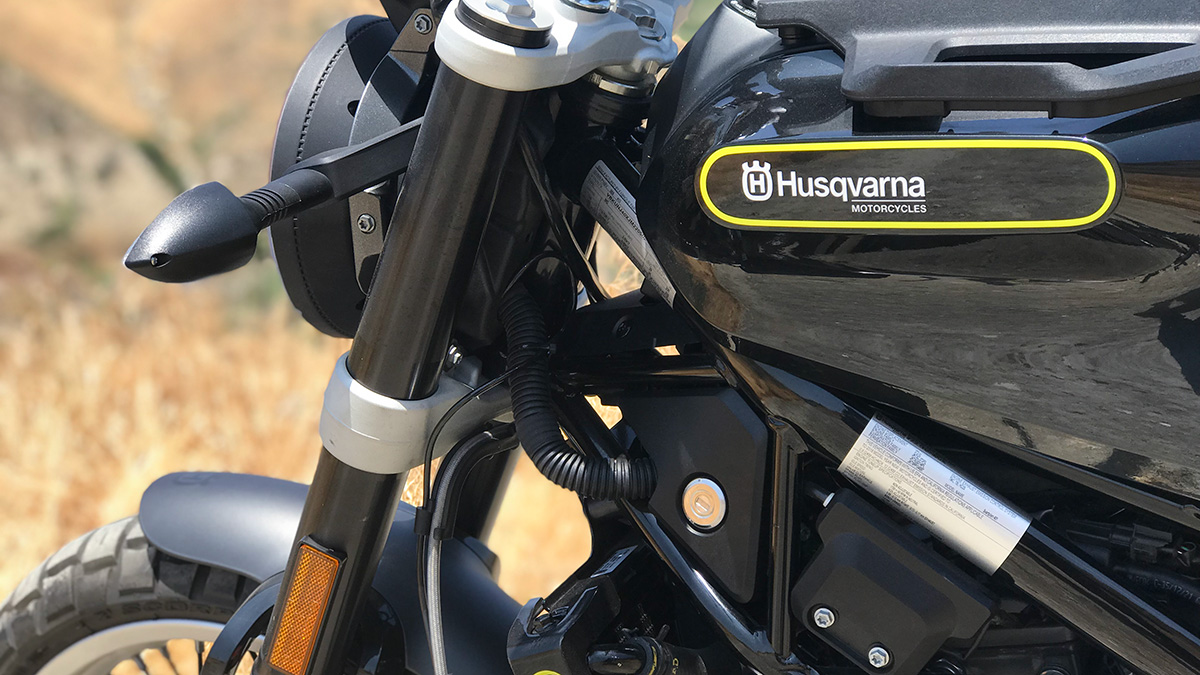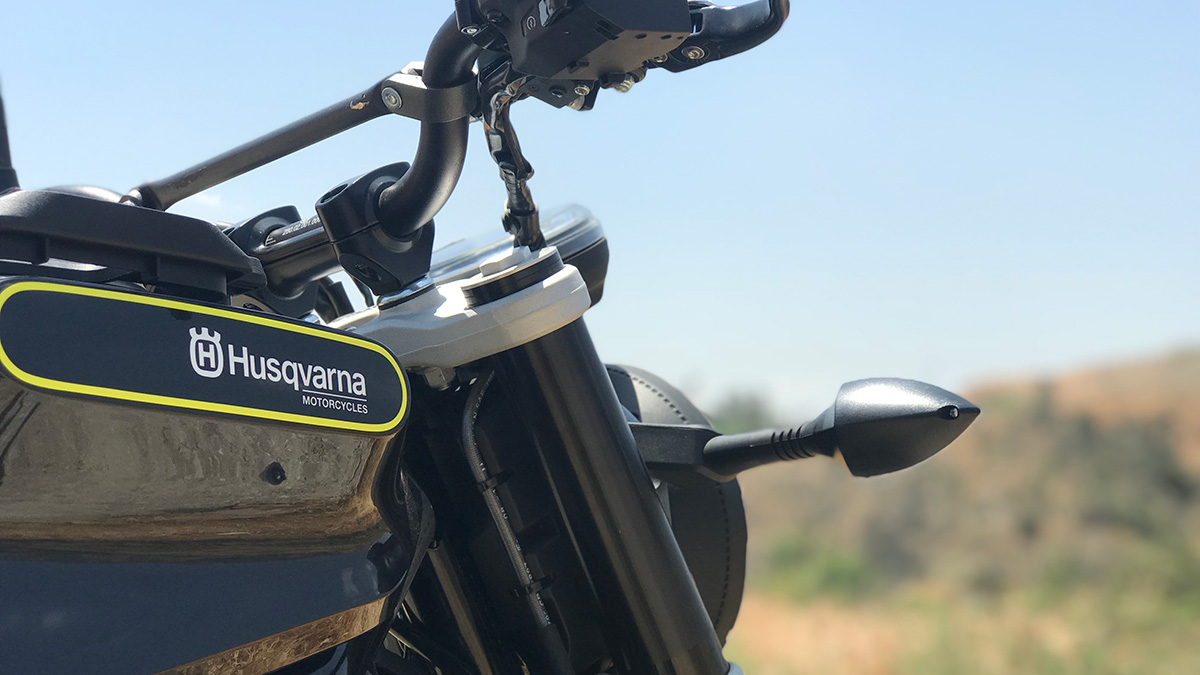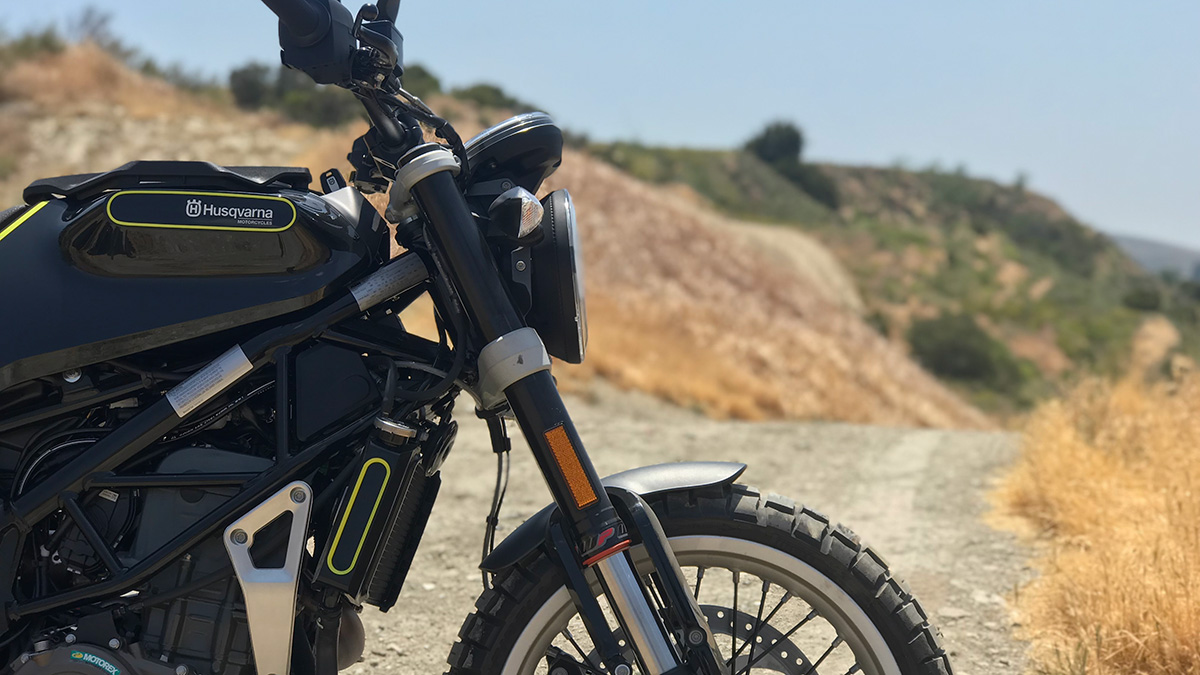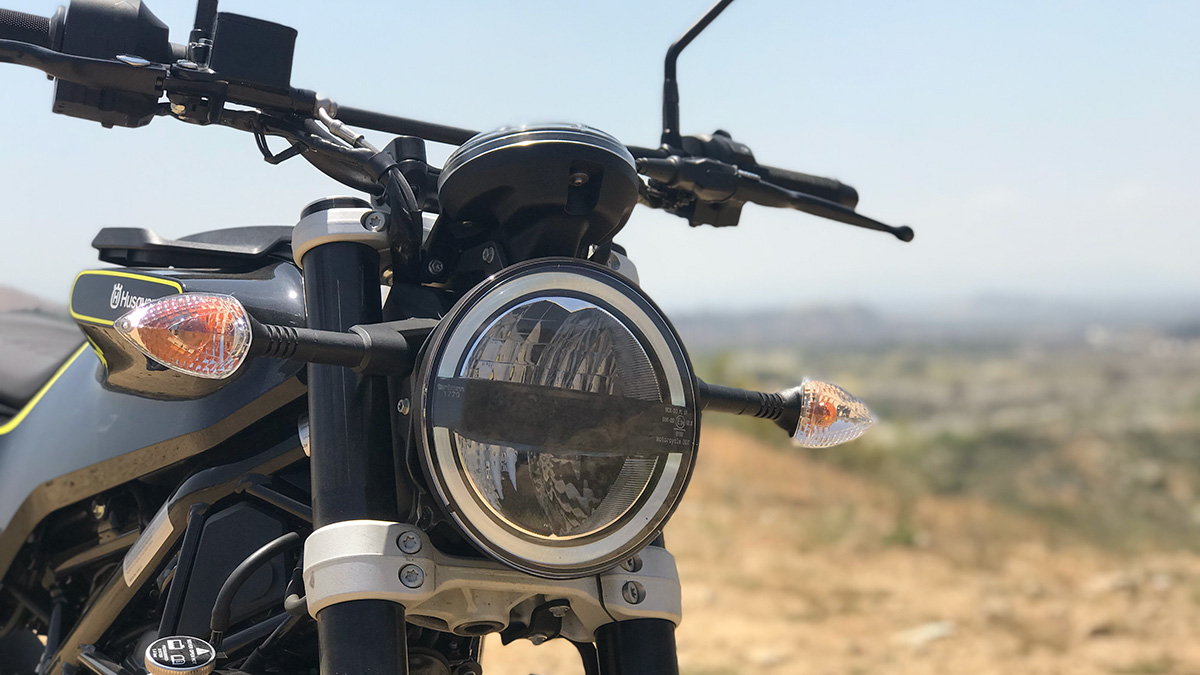My first thought when I gaze upon Husqvarna’s brand new Svartpilen 401: “It’s so tiny and adorable. Like a corgi in a marine’s combat boots!” I look over to the man with the keys and tell him, “This motorcycle has troublemaker written all over it. Give me those keys!” With some hesitation, he hands them over. I close my helmet, twist the throttle, and tear out of the gravel parking lot, kicking up dust and grit while smiling like a kid that’s just been given the OK to pick out a king-size candy bar. Get it, son!
Out into the wild world of plus-size SUVs and dangers, I streak through the dust-strewn valley that leads from the base of Sunland, California, to the very top of Angeles National Forest. Ahead of me is a pristine roadway. Miles of open tarmac free of the traffic normally associated with Los Angeles County. And today, there’s nary a soul in sight or ahead. I could go for an endless ride, skipping from turn to turn with the pint-sized Husqvarna. That fever-dream of Nurburgring-like track surfaces, however, isn’t in the cards for this baby. The dips, jumps, gravel, fist-sized rocks and sand alongside the road are, and I can’t help but smile with glee as I hop the curb and hit the trail.
Husqvarna’s new Svartpilen is powered by a single-cylinder, 375cc engine pumping out a lovely 43 horsepower. Now, I know what you’re thinking. That figure sounds like it’s barely enough to propel a medium-sized finch, let alone a heavy motorcycle and rider. But that’s where the Svartpilen shines, it’s as light as the finch’s feather (although I could likely shed a few pounds). The Svartpilen weighs just 326 pounds, making that horsepower figure give the little
I pin the throttle in second gear through the gravel path, slipping and sliding the tail of the motorcycle as I go. The rear tire searches from any and all traction it can get. I put some weight on my feet and pick myself up and immediately the
The ride isn’t as plush as a Honda Africa Twin, but nor is it as agonizing as a hardtail Harley-Davidson. Nor is it in the middle. Rather, the Svartpilen’s suspension feels much closer to the upright Honda — like the pint-sized Husky is ready to tackle anything, but still has its limits. Indeed, I push toward those limits as ahead is a mountain. Alright, it isn’t a mountain, but rather a very rough off-road hill that appears mountain-like atop the minuscule Husqvarna.
I can already see two-foot ruts, slick rocks the size of a medium-sized dog, and enough powdery dust and sand to coat my lungs and have me coughing up black tar for the next decade. It’s an off-road rider’s heaven and I intend to see if the Svartpilen can conquer it.
Stopping at the base of the hill, I stare upward. The task before me seems monumental. But after 15 minutes with the Svartpilen, I’m absolutely too eager to quit now. I drop my helmet’s visor, grab the throttle, and gas the motorcycle up the hill. I pick my lines carefully, avoiding as many of the medium-sized boulders and deep ruts as possible. I only stall it once after a particularly slick rock releases every ounce of traction from the rear tire, then catching traction, and throwing me off guard by attempting to propel me up the hill far faster than I intended, only to grab more brake than I needed and forgetting to clutch in.

The Svartpilen’s upright handlebars make choosing my following lines a breeze. They’re positioned wonderfully, as are the controls. The Svartpilen’s electronic throttle feels linear, almost cable controlled. What’s slightly less perfect for my romp through the rocky wasteland is the long uptake of the clutch. There feels like a few inches of travel between grabbing it and engagement. It’s not something that necessarily bad, it just doesn’t inspire the same confidence the rest of the Svartpilen’s performance and parts imbue. But no matter, I reach the top and complete a celebratory donut in the soft dirt. “Damn is this bike fun,” I say to myself as I wipe away the sweat from my brow and look out at the valley below.
Atop my crest, a sad realization comes to my frontal cortex. This motorcycle’s primary purpose isn’t whomping trails in the desert or streaming through the backwoods of the Pacific Northwest. Hell, it’s not even meant for older and more seasoned riders like myself. Rather, the Svartpilen, and it’s cafe racer Vitpilen sibling, were designed and engineered for new riders to get to and from their inner city apartments and to the nearest Whole Foods. This is a motorcycle for the green.
Husqvarna hasn’t built a road-going motorcycle in decades. Indeed, even through the
After riding both and putting each through its paces, I can not only safely say Husqvarna succeeded in that respect, but that the company desperately needs to make sure it doesn’t forget marketing these motorcycles to those that have been riding for years. They’re too much fun, and too capable, to just be given or marketed to those new to riding. I’d buy a Svartpilen tomorrow given I had enough in my bank account. It’s capable, quick, and just plain fun no matter what your skill level, and made that much better by its tiny price tag of just $6,299. I desperately need more time with it, and so do you.

